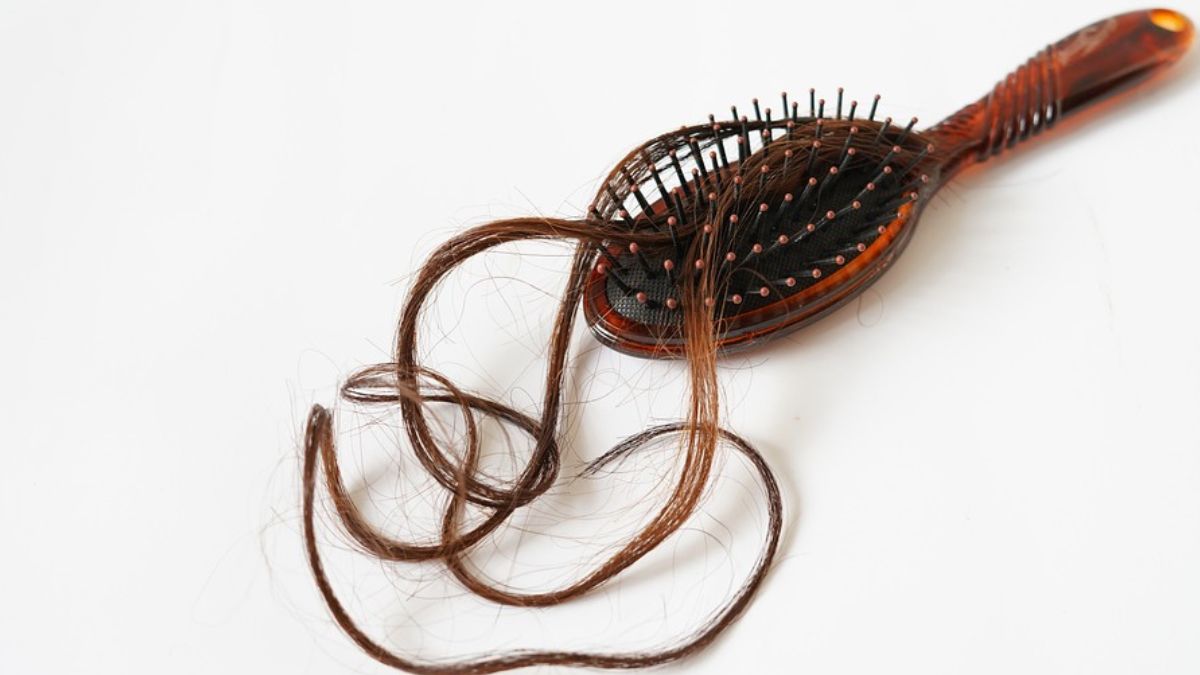Hair loss is a common problem that affects millions of people globally.
It can impact not only the way you look but can also lead to low confidence and psychological issues.
In the search for effective solutions, Propecia and finasteride have emerged as popular hair loss medications. But how well do they actually work?
This article will explore if Propecia and Finasteride are effective and walk you through their mechanisms of action, studies, and more.
By examining their differences, potential side effects, and available evidence, we aim to provide readers with a comprehensive understanding of these medications and their role in combating hair loss.
Understanding Hair Loss Medications
Hair grows in cycles of Anagen (growth), Catagen (regression), and Telogen (rest).
DHT, a hormone, shortens anagen and prolongs telogen, reducing hair growth.
Propecia, commonly known as Finasteride, is an FDA-approved medicine used to treat male pattern baldness, which causes a receding hairline and crown hair thinning.
Propecia contains 5-alpha-reductase inhibitor finasteride.
These drugs block 5-alpha-reductase, which turns Testosterone into DHT.
Hence, Propecia and Finasteride lengthen the Anagen phase, promoting hair growth and decreasing hair loss.
In addition, hair loss medicines reverse hair follicle shrinkage by lowering DHT. Hair grows healthier as follicles return to normal size. These drugs target the vertex (top) and anterior mid-scalp hair follicles.
Please note that these medicines do not work for everyone.
They are only recommended for male pattern baldness, not alopecia areata, hormone abnormalities, or underlying medical issues.
Consult a doctor to assess your hair loss pattern, medical history, and any contraindications before taking any hair loss medication.
Propecia Vs. Finasteride: Understanding the Difference
The terms Propecia and Finasteride are interchangeably used.
However, formulation, dose, and regulatory approval variances must be understood. To clarify:
Formula: Both Propecia and Finasteride include finasteride. Finasteride is the generic variant of Propecia. Both tablets contain the same active substance. However, manufacturers may use different inactive components.
Dosages: Propecia comes in 1 mg, whereas Finasteride, a generic medicine, may come in 1 mg or 5 mg. Note that the 1 mg dose is for male pattern baldness.
FDA Approvals: Propecia (1 mg) treats male pattern baldness. It worked in clinical studies for this indication. Finasteride, at various dosages, is FDA-approved for treating BPH and male pattern baldness. Both Propecia and finasteride can cure hair loss. However, only Propecia has FDA clearance.
Studies and Real Experiences
The American Academy of Dermatology states that finasteride can slow down hair loss and stimulate new hair growth when taken as directed
According to a review article published in the Journal of Investigative Dermatology Symposium Proceedings, all three studies demonstrated that finasteride treatment improved hair growth and slowed the progression of hair loss.
Beyond clinical studies, real-world experiences provide anecdotal evidence about the effectiveness of Propecia and finasteride.
Many individuals have reported positive outcomes, including improved hair growth, thicker hair, and reduced hair loss.
Personal testimonials and user forums often highlight success stories from individuals who have achieved significant hair regrowth and restoration using Propecia and finasteride.
However, it’s important to note that individual responses can vary, and not everyone may experience the same level of success.
It’s crucial to consult with a healthcare professional who can evaluate your specific hair loss pattern and provide personalized advice.
Potential Side Effects
Most side effects of Propecia and finasteride are well-tolerated. However, adverse effects might occur.
We examine common drug side effects and their occurrence and severity here.
Sexual side effects are a major issue with Propecia and finasteride. Libido, erectile dysfunction, and ejaculate volume can decrease. However, studies reveal these negative effects impact a tiny number of consumers.
Other adverse effects include breast discomfort or enlargement, testicular pain, and mood changes. These side effects are rare, but they require medical attention.
Duration of Side Effects: Propecia and Finasteride side effects usually subside after cessation. However, if adverse effects continue, see a doctor.
Side effects vary per person. Some have no negative effects, while others have minor or transient ones. To monitor changes and control side effects, healthcare professionals must communicate throughout therapy.
Before using Propecia or Finasteride, tell your doctor about any pre-existing problems. This information will help them decide if these drugs are safe for you.
This information is not thorough, and people may react differently to certain drugs. Always ask a doctor about Propecia and finasteride side effects.
Considering Risk-Benefit Ratio
Propecia and Finasteride may treat hair loss, but risks must be considered.
We examine the risk-benefit ratio of various drugs, including effectiveness and adverse effects.
Hair loss medications treat male pattern baldness in clinical trials. Most people treated with these medicines achieve considerable hair regrowth or stop losing hair.
Individual Response: Propecia and Finasteride affect people differently. Some people report significant hair growth, while others see no change. Results depend on hair loss degree, duration, treatment adherence, and individual differences.
Propecia and Finasteride have side effects like any drug. Few people experience negative sexual effects. These side effects must be monitored during treatment. However, most people don’t encounter these effects.
Individual Considerations: Your doctor will examine your medical history, existing medicines, and risk profile when recommending Propecia or finasteride. They will weigh the pros and cons and offer customized advice.
Shared Decision-Making: Consult a doctor before using Propecia or Finasteride. Considering your hair loss pattern, medical history, and preferences, you can balance the pros and cons. Open and honest talks help make educated decisions.
Conclusion
Propecia and finasteride treat male pattern baldness.
These medicines lower DHT, which shrinks hair follicles.
Most users regrew hair or stopped losing it in clinical trials. Real-life hair growth success stories are also available.
Sexual side effects are rare and usually disappear after stopping the medicine.
A doctor should prescribe Propecia and finasteride.
Propecia and finasteride are excellent treatments for male pattern baldness, but medical advice is essential.











